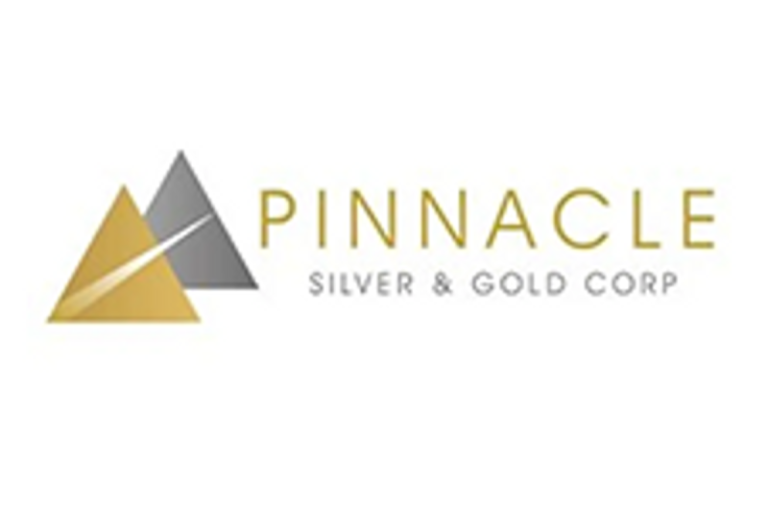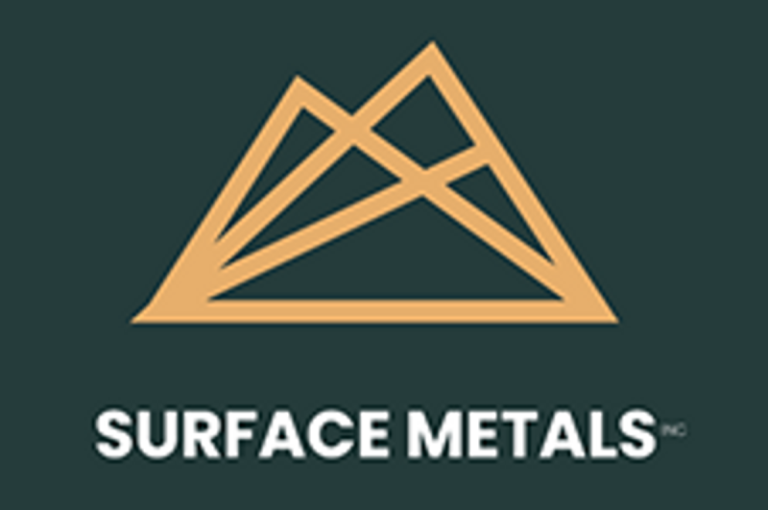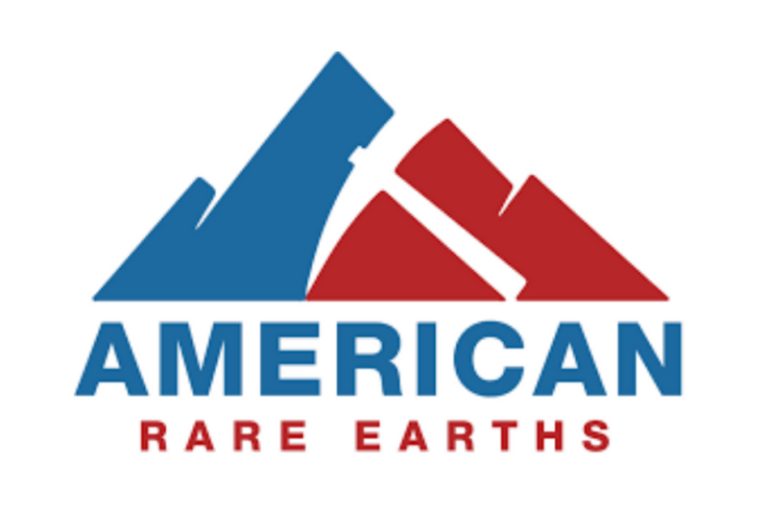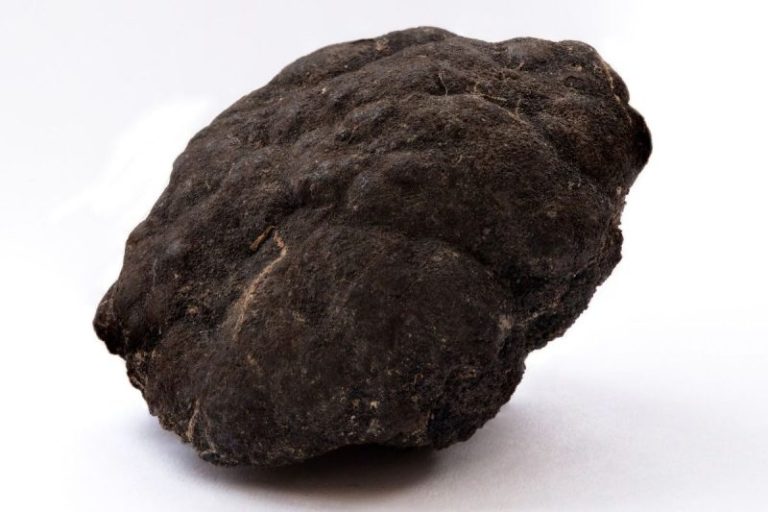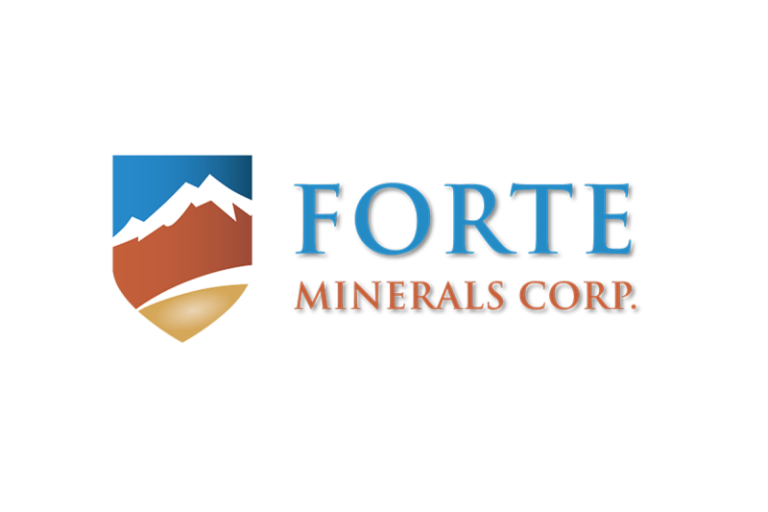(TheNewswire)
TORONTO, July 16, 2025 TheNewswire – Noble Mineral Exploration Inc. (‘ Noble ‘ or the ‘ Company ‘) (TSXV: NOB,OTC:NLPXF) (OTCQB: NLPXF) is pleased to announce the initial mineral resource at Mann Central as announced by its joint venture partner Canada Nickel in the East Timmins Nickel Company, operating in the Timmins area of Northern Ontario.
Noble CEO Vance White said ‘We congratulate our partner Canada Nickel on the work completed and the Initial Resource estimate for Mann Central project in Mann Twp and we are very excited about the prospects for East Timmins Nickel along with the several additional projects to be included. It is important to note that Noble retains certain NSR and Buy Back rights on claims in this project. ‘
Highlights:
TORONTO, July 15, 2025 – Canada Nickel Company Inc. (‘ Canada Nickel ‘ or the ‘ Company ‘) (TSX-V:CNC) (OTCQB: CNIKF) today announced initial mineral resource estimates (the ‘Mineral Resource Estimate’ or ‘MRE’) for its Mann Central Nickel Sulphide Project (‘Mann Central’), located 40 km northeast of Timmins, Ontario and its Texmont Nickel Sulphide Project (‘Texmont’), located 36 km south of Timmins. Canada Nickel owns 80% of Mann Central through its interest in East Timmins Nickel Ltd. (‘East Timmins’), with the remaining 20% of East Timmins owned by Noble Mineral Exploration Inc. (‘Noble’). Texmont is wholly owned by Canada Nickel through the Company’s wholly owned subsidiary, Central Timmins Nickel Company Inc. (‘Central Timmins’). Mark Selby, CEO of Canada Nickel said, ‘We are very pleased with these two new resources and even more excited by the growing scale of the Timmins Nickel District with over 9 million tonnes in each of the Measured & Indicated and Inferred categories. Mann Central is a mineral resource with significant scale and considerable potential for further testing in the future. Texmont, though a smaller target, has delivered strong results with meaningful quantities of higher grade nickel. I look forward to advancing Crawford towards a year-end construction decision and to showcasing the full potential of the Timmins Nickel District, with three additional mineral resource estimates to be published by year-end.’
Mann Central Mineral Resource Estimate
The Mann Central Project is only 23 km east of the Company’s Crawford Nickel Sulphide Project (‘Crawford’) and is more than twice the size of Crawford based on the outline of its geophysical target of 3.1 square kilometres. The area of the geophysical target covered by the Mann Central MRE represents approximately 40% of its total target geophysical area. Mann Central is accessible year-round.
For the initial MRE, a total of 12,563 metres of core drilling from 32 drill holes were utilized to calculate the Mann Central mineral resources in two categories as summarized in Table 2. Indicated Mineral Resources total 237 million tonnes grading 0.22% nickel, for a total of 0.52 million tonnes of contained nickel and Inferred Mineral Resources total 537 million tonnes grading 0.21% nickel, for a total of 1.15 million tonnes of contained nickel. The approximate dimensions of the Mann Central MRE are 2.4 kilometres long, up to 700 metres wide, extending to 500 metres deep, and remaining open in all directions. An additional 0.6 – 2.0 billion tonnes grading between 0.19% and 0.20% nickel remain as an Exploration Target, pending further drilling. This Exploration Target is based on core drilling by the Company, the geophysical survey on the Mann Central Project, and the understanding and calculation of the current Mann Central MRE.
The Exploration Target was derived by modelling the identified nickel sulphide mineralization within the current estimation envelope but outside of the current MRE area. The volume of the modelled Exploration Target area determines the potential tonnage statement in the Exploration Target. The grade range given in the Exploration Target is determined with consideration to the drill core results within the modelled Exploration Target area, consideration of the geological setting in a well understood nickel deposit type where grades are observed and well understood and based on the experience of the Company and the Qualified Persons. The potential tonnages and grades are conceptual in nature and are based on drill holes and geophysical results that define the approximate length, thickness, depth and grade of the Exploration Target. There has been insufficient exploration to define a current mineral resource and the Company cautions that there is a risk that further exploration will not result in the delineation of a current mineral resource.
Drilling at Mann Central was conducted in 2023 and 2024. The 2024 campaign successfully completed the goal of infilling previous sections to allow for the definition of an initial mineral resource estimate, gain understanding on the geology of the deposit, as well as systematically collecting samples for mineralogical analysis.
The Mann Central MRE was prepared by Caracle Creek International Consulting Inc. and its sub-consultant L&M Geociencias, in accordance with CIM Estimation of Mineral Resources & Mineral Reserves Best Practice Guidelines (2019) and CIM Definition Standards for Mineral Resources & Mineral Reserves (2014). A Technical Report in support of the Mineral Resource Estimate will be filed on SEDAR+ ( www.sedarplus.ca ) within 45 days of this news release.
Table 2. Initial Total Mineral Resource Estimate (in-pit resources) for the Mann Central Nickel Sulphide Deposit.
|
Mineral Resource Estimate
|
|
Contained Metal
|
|
Class
|
Tonnage
(Mt)
|
Ni
(%)
|
Co
(%)
|
Fe
(%)
|
Cr
(%)
|
Pd
(g/t)
|
Pt
(g/t)
|
|
Ni
(kt)
|
Co
(kt)
|
Fe
(Mt)
|
Cr
(kt)
|
Pd
(koz)
|
Pt
(koz)
|
|
Indicated
|
236.7
|
0.22
|
0.012
|
6.6
|
0.34
|
0.005
|
0.006
|
|
519.5
|
28.2
|
15.7
|
797.9
|
35.1
|
47.1
|
|
Inferred
|
543.2
|
0.21
|
0.012
|
6.8
|
0.30
|
0.006
|
0.007
|
|
1,150
|
65.9
|
37.0
|
1,628
|
98.0
|
129.8
|
Notes to Table 2:
-
The independent Qualified Person for the MRE, as defined by National Instrument 43-101 – Standards of Disclosure for Mineral Projects (‘NI 43-101’), is Dr. Scott Jobin-Bevans (P.Geo., PGO #0183), of Caracle Creek International Consulting Inc. The effective date of the MRE is June 25, 2025.
-
The quantity and grade of reported Inferred Mineral Resources in this MRE are uncertain in nature and there has been insufficient exploration to define these Inferred Mineral Resources as Indicated or Measured. However, it is reasonably expected that the majority of Inferred Mineral Resources could be upgraded to Indicated Mineral Resources with continued exploration.
-
A cut-off grade of 0.10% Ni was used to define potentially economic material for inclusion within the MRE. Cut-offs were determined on the basis of core assay geostatistics and drill core lithologies for the deposit, and by comparison to analogous nickel deposit types.
-
Geological and block models for the MRE used data from a total of 32 surface drill holes, completed by Canada Nickel in 2023 and 2024. The drill hole database was validated prior to resource estimation and QA/QC checks were made using industry-standard control charts for blanks, core duplicates and commercial certified reference material inserted into assay batches by Canada Nickel and by comparison of umpire assays performed at a second laboratory.
-
Estimates have been rounded to two significant figures.
-
The MRE was prepared following the CIM Estimation of Mineral Resources Mineral Reserves Best Practice Guidelines (November 29, 2019) and the CIM Definition Standards for Mineral Resources Mineral Reserves (May 19, 2014).
-
The geological model as applied to the MRE comprises two mineralized domains hosted by variably serpentinized ultramafic rocks: a relatively higher-grade core (dunite), and a lower grade (peridotite). Individual wireframes were created for each domain in Leapfrog Geo 2024.1 software.
-
A 20 m x 20 m x 15 m block model was created, and samples were composited at 7.5 m intervals. Grade estimation from drill hole data was carried out for Ni, Co, Fe, Cr, S, Pd and Pt using the Ordinary Kriging interpolation method in Isatis 2024.04 software.
-
The MRE has been constrained by a conceptual pit envelope that was developed using the following optimization parameters. Metal prices used were US$21,000/t nickel, US$40,000/t cobalt, US$325/t iron, US$3,860/t chromium, US$1,350/oz palladium, and US$1,150/oz platinum. Different pit slopes were used for each layer (in degrees): 9.5 in overburden, and 40.0 in mineralized rock, and 45 in waste rock. Exchange rate utilized was US$/C$ at $0.76. Mining costs utilized different values for overburden (clay, gravel), and rock mining, ranging from C$1.47 to C$3.00/t mined. Processing costs and general administration costs for a 120 ktpd operation (similar to the ultimate scope of Crawford) were C$8.30/t. Based on the range of grade and ratio of sulphur to nickel, calculated recovery averages 39% for Ni, 10% for Co, 54% for Fe, 29% for Cr, 39% for Pd and 18% for Pd.
-
Grade estimation was validated by comparison of input and output statistics (Nearest Neighbour and Inverse Distance Squared methods), swath plot analysis, cross-plots of declustered samples against the nearest OK estimate, and by visual inspection of the assay data, block model, and grade shells in cross-sections.
-
Density estimation was carried out for the mineralized domains using the Ordinary Kriging interpolation method, based on 1,270 specific gravity measurements collected during the core logging process, using the same block model parameters of the grade estimation. As a reference, the average estimated density value within dunite is 2.66 g/cm (t/m ), while the peridotite domain yielded an average of 2.74 g/cm (t/m ).
Figure 1. Plan View of Mann Central Resources, Mann Central Nickel Sulphide Project, Ontario.
Click Image To View Full Size
Figure 2. Plan View of the Categorized Mann Central Resources along with %Ni Grade.
Click Image To View Full Size
Click Image To View Full Size
Figure 3. Mann Central Nickel Sulphide Project Long-Section (Looking North) of Resource Categories (Upper Image) and %Ni Grade (Lower Image).
Click Image To View Full Size
Click Image To View Full Size
Next Steps at Mann Central Nickel Sulphide Project:
-
A technical report with respect to the MRE disclosed today will be filed within 45 days of this news release.
-
Infill drilling at the property will aim to increase and upgrade Inferred Mineral Resources to Indicated Mineral Resources in the next drilling campaign.
-
Mineralogical and metallurgical analysis will continue to better understand and estimate metal recoveries.
Assays, Quality Assurance/Quality Control and Drilling
Edwin Escarraga, MSc, P.Geo., a ‘Qualified Person’ within the meaning of NI 43-101, is responsible for the on-going drilling and sampling program, including quality assurance (QA) and quality control (QC). The core is collected from the drill in sealed core trays and transported to the secure core logging facility (core shack). The core is marked and sampled at 1.5 metre lengths and cut with a diamond blade saw. One set of samples is transported in secured bags directly from the Canada Nickel core shack to Actlabs Timmins, while a second set of samples is securely shipped to SGS Lakefield for preparation, with analysis performed at SGS Burnaby. All are ISO/IEC 17025 accredited labs and independent of Canada Nickel. Analysis for precious metals (gold, platinum, and palladium) are completed by Fire Assay while analysis for nickel, cobalt, sulphur and other elements are performed using a peroxide fusion and ICP-OES analysis. Certified standards and blanks (QA/QC samples) are inserted at a rate of three QA/QC samples per 20 core samples making a batch of 60 samples that are submitted for analysis.
Qualified Person and Data Verification
Stephen J. Balch (P.Geo. – Ontario), VP Exploration of Canada Nickel and a ‘Qualified Person’ within the meaning of NI 43-101, has verified the data disclosed in this news release, and has otherwise reviewed and approved the technical information in this news release on behalf of Canada Nickel Company Inc.
The magnetic images shown in this news release were created from Canada Nickel’s interpretation of datasets provided by the Ontario Geological Survey.
About Canada Nickel Company
Canada Nickel Company Inc. is advancing the next generation of nickel-sulphide projects to deliver nickel required to feed the high growth electric vehicle and stainless-steel markets. Canada Nickel Company has applied in multiple jurisdictions to trademark the terms NetZero Nickel TM , NetZero Cobalt TM , NetZero Iron TM and is pursuing the development of processes to allow the production of net zero carbon nickel, cobalt, and iron products. Canada Nickel provides investors with leverage to nickel in low political risk jurisdictions. Canada Nickel is currently anchored by its 100% owned flagship Crawford Nickel-Cobalt Sulphide Project in the heart of the prolific Timmins-Nickel District. For more information, please visit www.canadanickel.com.
About Noble Mineral Exploration Inc.
Noble Mineral Exploration Inc. is a Canadian-based junior exploration company, which has holdings of securities in Canada Nickel Company Inc., Homeland Nickel Inc., East Timmins Nickel Inc.(20%), and its interest in the Holdsworth gold exploration property in the area of Wawa, Ontario.
Noble holds mineral and/or exploration rights in ~70,000ha in Northern Ontario, ~14,000ha elsewhere in Quebec and Newfoundland, upon which it plans to generate option/joint venture exploration programs .
Noble holds mineral rights and/or exploration rights in ~18,000 hectares in the Timmins-Cochrane areas of Northern Ontario known as Project 81, ~2,215 hectares in Thomas Twp/Timmins, as well as an additional 20% interest in ~38,700 hectares in the Timmins area and ~175 hectares of mining claims in Central Newfoundland. Project 81 hosts diversified drill-ready gold, nickel-cobalt and base metal exploration targets at various stages of exploration. Noble also holds ~4,600 hectares in the Nagagami Carbonatite Complex and its ~3,200 hectares in the Boulder Project both near Hearst, Ontario, as well as ~3,700 hectares in the Buckingham Graphite Property, ~10,152 hectares in the Havre St Pierre Nickel, Copper, PGM property, and ~1,573 hectares in the Cere-Villebon Nickel, Copper, PGM property, ~569 hectare Uranium/Rare Earth property (Chateau) and a ~461 hectare Uranium/Molybdenum property (Taser North), all of which are in the province of Quebec.
Noble’s common shares trade on the TSX Venture Exchange under the symbol ‘NOB.’
More detailed information on Noble is available on the website at www.noblemineralexploration.com .
Cautionary Note and Statement Concerning Forward Looking Statements
This press release contains certain information that may constitute ‘forward-looking information’ under applicable Canadian securities legislation. Forward looking information includes, but is not limited to, the potential of the Mann West Nickel Sulphide Project, timing for filing a technical report in support of the Mineral Resource Estimate, the significance of drill results, the ability to continue drilling, the impact of drilling on the definition of any resource, timing and completion (if at all) of additional mineral resource estimates, the potential of the Timmins Nickel District, strategic plans, including future exploration and development plans and results, and corporate and technical objectives. Forward-looking information is necessarily based upon several assumptions that, while considered reasonable, are subject to known and unknown risks, uncertainties, and other factors which may cause the actual results and future events to differ materially from those expressed or implied by such forward-looking information. Factors that could affect the outcome include, among others: future prices and the supply of metals, the future demand for metals, the results of drilling, inability to raise the money necessary to incur the expenditures required to retain and advance the property, environmental liabilities (known and unknown), general business, economic, competitive, political and social uncertainties, results of exploration programs, risks of the mining industry, delays in obtaining governmental approvals, failure to obtain regulatory or shareholder approvals. There can be no assurance that such information will prove to be accurate, as actual results and future events could differ materially from those anticipated in such information. Accordingly, readers should not place undue reliance on forward-looking information. All forward-looking information contained in this press release is given as of the date hereof and is based upon the opinions and estimates of management and information available to management as at the date hereof. Canada Nickel disclaims any intention or obligation to update or revise any forward-looking information, whether because of new information. Neither TSX Venture Exchange nor its Regulation Services Provider (as that term is defined in policies of the TSX Venture Exchange) accepts responsibility for the adequacy or accuracy of this release.
Contacts:
H. Vance White, President
Phone: 416-214-2250
Fax: 416-367-1954
Email: info@noblemineralexploration.com
Investor Relations
Email: ir@noblemineralexploration.com
Copyright (c) 2025 TheNewswire – All rights reserved.


